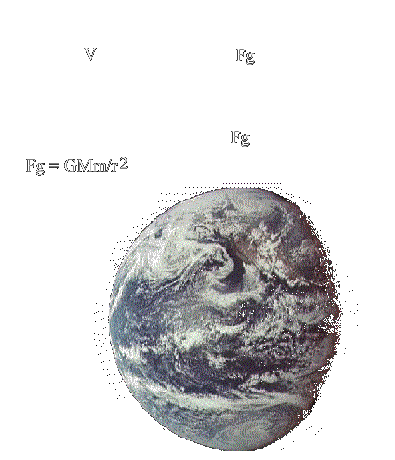



Location for Manufacturing Facility
A key factor in the design, implementation, and cost of a manufacturing facility in space relies on location. Within the capabilities of present day technologies there lies only two fundamental choices:
-
The Moon
-
Low Earth Orbit
The Moon

The moon does have some very useful features. It has a very large amount of raw materials available from the soil. Moored to the surface of the moon, a facility would be considerably more stable than an orbiting station.The moon also allows heat disposal by conduction into the soil as opposed to radiation (which is the only method possible in open space).The moon possesses a small gravitational force which means the equipment could utilize gravity to handle the silicon wafers. However this is where the advantages cease.
A successful manufacturing facility would require frequent supply and maintenance which is virtually impossible if the facility is located on the moon due to the very long distance to travel and the "turn around time" required. Travelling to the moon requires a Saturn V rocket which is non-reusable meaning that a new rocket is required for each voyage to the moon. Being 110.6 meters tall and fueled by a huge volume of kerosene and liquid hydrogen, the Saturn V are sufficiently expensive enough to build that the United States Space program has ceased to return manned missions to the moon.(among other factors like the Apollo 13 mission). Another contributor to the cost of travel to and from the moon is the gravity on the moon (1/6 g). This means to leave the moon, a craft must break away from the moon's gravity as well as get sufficient speed to return to Earth.
The moon also presents some energy problems. The rotation of the moon allows for 2 consecutive weeks of sunlight for energy collection. However, there is also 2 consecutive weeks of darkness which would neccessitate a very high power energy storage system. With the amount of energy constantly required by the facility, the feasiblility of storing this much energy is low.
There are also some safety hazards that are present on the moon that are not present close to the Earth. The reason that cosmic radiation doesn't expose the earth to intolerable levels of radiation is a the presence of the Earth's magnetic field (The Van Allen Belts). Because cosmic rays are generally electrically charged, when they begin to pass into the Earth's electromagnetic field they are deflected towards the poles and thus do not expose the majority of the populated surface. The moon possesses no such magnetic field and therefore human beings on the surface of the moon would be prone to exposure to deadly levels of radiation should a solar flare occur.
Low Earth Orbit
Low earth orbit is the most attractive option for putting a manufacturing facility into space. Since the facility would be orbiting the earth the distance to travel for re-supply and maintenance would be relatively small and would allow the use of the space shuttle (which is re-useable). Also ,as discussed before, the magnetic field of the earth would shield the facility from cosmic radiation. Since the standard orbit would be approximately 90 minutes, that would mean energy storage would be needed for only 45 minutes per orbit.
There are some difficulties with structures in orbit. Objects in space interact almost without the normal resistive forces present on earth which requires close attention to Newtonian mechanics. In order to move something on the space station (and keep the space station from moving) one must have an object of equal mass mirror these movements (to balance all torques). Another effect that must be overcome is the tidal effect. When an object orbits the earth (assuming is has some height) the part furthest from the earth will experience less gravitational force that the parts closer to the earth. (This is in accordance with the formula Fg = GMm/r
2
). This could cause some orbital problems if the station is large.

Although a low Earth orbit is sufficiently high enough to produce "wieghtless" conditions, there is still some atmosphere present at such an altitude. At an estimated orbital speed of 7 km/s this causes enough drag force to neccessitate a periodic "boost" to a higher velocity and altitude.









